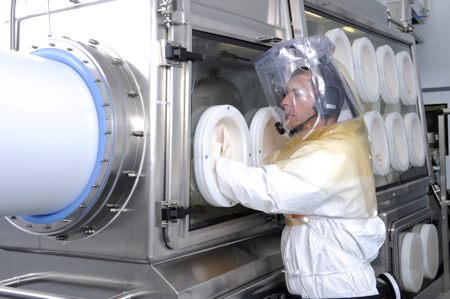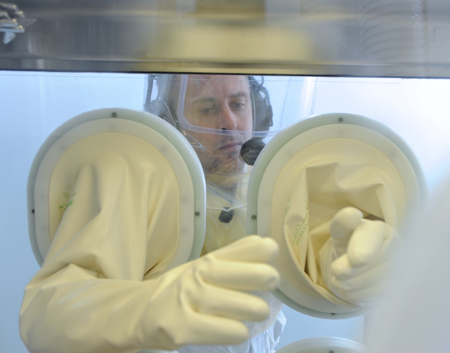When a company is looking to outsource a pharmaceutical manufacturing programme, there are multiple potential partners across the globe to whom it can choose to transfer its project, whether that programme is in development or already commercialised.
Many companies offer contract manufacturing services for pharmaceutical doses, some inhabiting specific individual technology niches, while others offer wider capabilities and a high production capacity. There are many factors that a company should take into account when determining whether the potential outsourcing partner is a credible vendor for an individual project, and the selection of the right partner may be complicated if the product requires special handling, requires a bespoke technology approach, or when that partner would need to provide a flexible manufacturing solution. But all of this starts with a successful transfer of technology.
A sponsor company must decide how and where a novel product will be manufactured long before it files for regulatory approval
A sponsor company must decide how and where a novel product will be manufactured long before it files for regulatory approval. If it does not have the capability, including specialised equipment, or the space or capacity to manufacture it in house, or believes that a third party is better placed to deliver what it is looking for, then it is important to bring experts from the outsourcing partner onto the development team as soon as possible. This will enable the outsourcing partner to review all the pertinent information, and prepare its own staff for the imminent technology transfer process.
Aside from technological proficiency, perhaps the most critical consideration to ensure success is the cultural fit, including, for example, whether the partner’s process innovation skills can benefit the product development. If a particular drug delivery platform would be the best way to deliver the drug to patients, then a partner skilled in that particular format would clearly offer an advantage. Another consideration is the increase in treatments utilising potent APIs and the inherently more difficult manufacturing process and controls these require; this requires a partner with capabilities and experience with potent compounds from development to commercial supply. Equally, if the drug itself has delivery issues, perhaps because it is extremely insoluble, then it may be beneficial to work with an experienced partner with capabilities and experience in solving bioavailability or release profile problems, or which can offer proprietary delivery technologies.
Supply chain factors
Experience has taught that several problems commonly arise when carrying out the site transfer of a development project. The first of these is the supply of active materials. These issues most frequently occur when a Contract Research Organisation (CRO) has successfully synthesised small quantities of the drug substance for the early stages of development, but is unable to supply the larger quantities of material that become required as the product moves through the pipeline. In this case, a new manufacturer of the API will have to be sourced.
Problems most commonly arise when several different suppliers are used throughout the development and initial scale-up phases of the project
A related challenge arises when the property specifications, for example a formulation’s propensity to attract an electric-static charge or its ‘stickiness’ during processing, are set during the early stages of development, when the required quantities are still small, but it proves difficult to achieve efficient production on a larger scale, potentially at a new facility.
Excipients can also cause difficulties in terms of both sourcing and specifications. With many excipients being, essentially, commodity materials, problems most commonly arise when several different suppliers are used throughout the development and initial scale-up phases of the project. It is not unusual for the preferred suppliers of excipients to be different for the R&D team and the scale-up group. If the product and process is being transferred to a contractor in another country, there may also be differences in the grades of excipient they are able to source.
The effective transfer of analytical methods is important too. However carefully the procedure is documented and followed, there will inevitably be subtle differences in the equipment and techniques employed by the analytical groups in the research and manufacturing functions. If differences occur in the data between the two groups, they cannot be ignored in case they signify a problem with the product. It is therefore vital that representatives from the two groups spend time carefully discussing the methods before the transfer takes place to minimise the chances of a problem occurring further along the development process.
In terms of the dosage form itself, there are many stability-related issues that might arise. The packaging must be defined, and it must be possible to have the packages prepared for stability studies. Carrying out a stability testing programme does not normally cause problems that undermine efficiency in the technology transfer process, but stability will affect the product development timetable if the sample shows an improper release rate at a specific stability point. If this does happen, all of the relevant parties will have to convene to consider what caused the product to fail stability.
Factors that might have caused the failure include an unstable formulation. However, it could be that the in vitro test does not realistically represent how the product behaves when it is taken in vivo during a clinical trial. It could be that there is some form of incompatibility between the active and one of the excipients included in the formulation. And were there any processing problems while the lot being tested for stability was being manufactured?
Equipment selection and operation may be challenging when transferring a project. Underestimating the impact, even of seemingly minor differences in processing equipment between research and manufacturing groups, is perhaps the most overlooked cause of unexpected delays during technology transfer. Even minor differences in any of the ancillary or support equipment can result in a technology transfer processing series (a batch or a number of batches) that does not achieve the expected results.
The major pieces of processing equipment, such as reactors, tablet presses, dosage form fillers and packaging machinery will be clearly defined. However, this may not be the case for much of the other equipment that is required. The pumping system, the spraying system, the mixer and mixing tank, and the fabricator may not be defined, even though they can have a significant impact on the ultimate output of the process. The specification and purchase of a whole range of equipment must also be considered, such as filter bags or cartridges, vibratory sifting screens and mill baskets, and even the tooling for the tablet press.
| Case study: Flexibility in planning for product launch – Zambon, Italy |
| Catalent’s Schorndorf team began working on Zambon’s Safinamide in August 2012. Zambon’s is the first new molecule in 20 years for the treatment of Parkinson’s disease. |
| Zambon had specific requirements on the product’s appearance, including that both the 50mg and 100mg strengths took the form of a shiny copper coloured biconcave tablet. Zambon entrusted Catalent as preferred supplier with the scale and experience to reach the markets they would target worldwide. |
| Upon completion of the initial feasibility and compatibility studies, the first clinical trials began in January 2013. As time progressed and the application submissions were reaching the point of regulatory approval, Zambon and Catalent prepared for several launch scenarios based on the anticipated approval dates from the appropriate regulatory authorities, and the fastest possible launches following those approvals. The first products were launched in Germany in May 2015 under the brand name Xadago. Subsequently, applications have been made to several other regulatory authorities, including the US FDA, where the product will be packed into bottles. |
Operational and quality considerations
A large number of critical issues must be considered before production actually starts. Raw materials are at the top of the list and reliable suppliers found that they are able to meet the material specifications that must also be drawn up. Analytical testing requirements must be determined, SOPs must be drafted and agreed and, if necessary, a contract laboratory identified and audited. Potential bottlenecks and long lead-time items will have to be identified and necessary items must be ordered in good time if delays are not to hold up production and have a negative impact on timelines.
Similarly, an exhaustive list of the equipment required must be prepared, along with requirements for the facility’s infrastructure. If equipment is not already available on site it must be sourced and purchased. Everything must be installed, calibrated and validated, and SOPs for both operation and cleaning processes laid down.

Selection of the right partner may be complicated if the product requires special handling
Assays are an important factor in meeting regulatory requirements, and plans for their transfer must be made, whether they are in-process assays or for product release. Again, if necessary, third-party labs must be identified and audited. Documentation requirements are also extensive, ranging from the generation of process flow diagrams to the development of SOPs across the board. All relevant quality considerations have to be taken into account, too.
Choosing the right partner
Ultimately, the ideal outsourcing partner is not only a company who can meet all of these requirements – it is one that has a good cultural ‘fit’ and a demonstrable track record that will make the sponsor confident in all aspects of the partner’s abilities and will meet all the product’s operational, quality and financial needs. Yes, cost is one aspect of it, but choosing a partner solely on cost is unlikely to make for a successful relationship.
One should always assume that setbacks will occur during the technology transfer phase of the project, and the budget should be set accordingly, with suitable levels of contingency built in. There should be a clear understanding of how capital investments will be shared, and a consensus reached at the outset about how any additional charges that arise during the transfer activities will be addressed.
It is also important to establish at the outset that the partner will be able to meet all projected capability and capacity needs over time. As a product moves from development through late-stage trials and into commercial availability, the quantities that will need to be made will increase. How will the outsourcing partner grow to meet those needs? Launches are hard and it is vital to find a partner that has a history of successful product launches as well as a network strategy to support.
The transfer schedule should be locked in at least 90 days in advance, and a similar schedule should kick in for commercial manufacturing, with allowances built in for surge capacity. Looking ahead to approval, what will the plant’s capacity look like at the point the product is launched? And does the partner offer a capacity reservation option?

All parties involved in the entire manufacturing chain should be proficient in the area in which they are selected to work
All parties involved in the entire manufacturing chain should be proficient in the area in which they are selected to work. For maximum efficiency in a technology transfer, all parties should also have a vested interest in the long-term success of the project. The right CMO will be able to utilise its expertise of highly specialised services, dedicated infrastructure and focused personnel to provide clients with a quality product both on time and on budget, and with maximum economies.
The effective technology transfer of any dosage form to a third party manufacturer will require effective team management and efficient communication between all the stakeholders. Technical expertise and efficient process transfer and engineering runs, allied to effective tools, are crucial. But perhaps the most important factor will be the development of a good working relationship between all the parties involved, based on mutual trust and co-operation.




